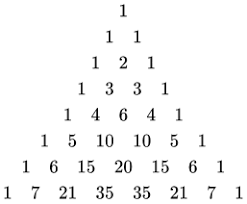Problems
Prove that for all positive integers \(n\) there exists a partition of the set of positive integers \(k\le2^{n+1}\) into sets \(A\) and \(B\) such that \[\sum_{x\in A}x^i=\sum_{x\in B}x^i\] for all integers \(0\le i\le n\).
Diophantine equations are those where we’re only interested in finding the integer (whole number) solutions. Some of these equations are quite simple, while others look simple but are actually very difficult. The most famous one is Fermat’s Last Theorem, which says that when \(n>2\), there are no solutions to \[x^n+y^n=z^n.\] Pierre de Fermat claimed that he proved this in 1637, scribbling it in the margin of a book, but said “I have discovered a truly marvelous proof of this, which this margin is too narrow to contain." It was only proved by Andrew Wiles in 1995. Today’s problems won’t take 358 years to solve.
For which \(n\) is the expression \(n^4+4^n\) prime?
Find all solutions to \(x^2+2=y^3\) in the natural numbers.
McDonald’s used to sell Chicken McNuggets in boxes of 6, 9 or 20 in the UK before they introduced the Happy Meal. What is the largest number of Chicken McNuggets that could not be bought? For example, you wouldn’t have been able to buy 8 Chicken McNuggets, but you could have bought \(21 = 6+6+9\) Chicken McNuggets.
Show that the equation \(x^4+y^4=z^4\) cannot satisfied by integers \(x,y,z\) if none of them are 0.
A regular polygon has integer side lengths and its perimeter is 60. How many sides can it have?
Find positive integers \(x,y,z\) such that \(28x+30y+31z = 365\).
Given a piece of paper, we are allowed to cut it into 8 or 12 pieces. Can we get exactly 60 pieces of paper starting with a single piece?
Pascal’s triangle, (known as Khayyam’s triangle in Iran and Yang Hui’s triangle in China) is seen below.

Well, what does it mean? We start with diagonal lines of 1s. Then every other number in the interior is the sum of the two numbers above it. With this simple rule, the triangle shows lots of cool structure.